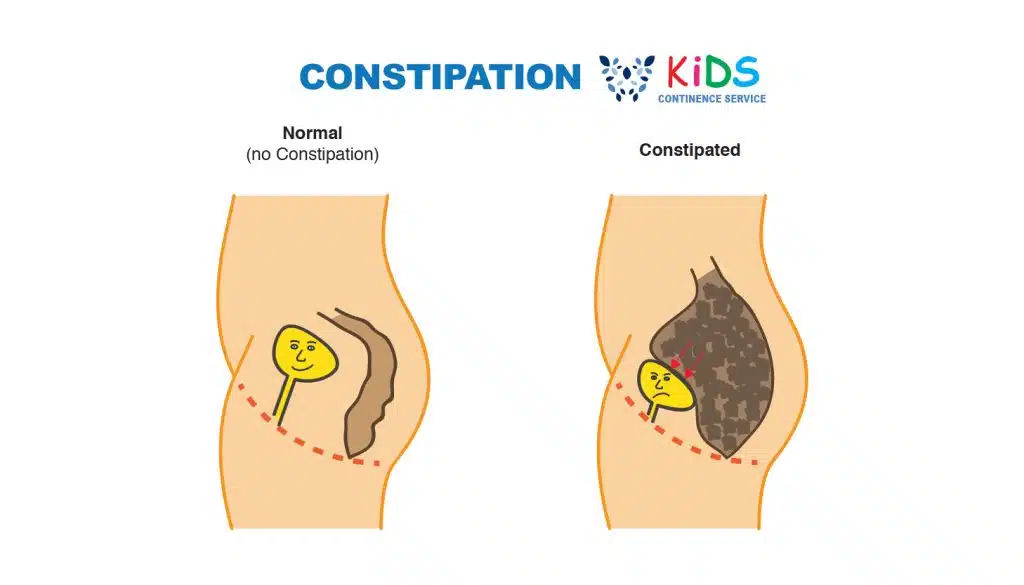Sometimes the first sign of constipation in a child can be that they begin wetting themselves after being toilet trained successfully, or faecal smearing, “skid marks” in their underwear.
What is Constipation and Why do I Need to Address it?
Constipation is when ‘poo’ or bowel motions are difficult to pass and less frequent. It happens in 25% of children at some stage in their childhood. When there is constipation, the poo tends to be hard and dry, you may notice the poo is like small little pellets or just that you only pass small amounts, you may have tummy pains, cramps, pain with straining, spending a long time in the toilet, or feeling as if you have not emptied completely. Another sign of constipation is when there is smearing on the undies.
What’s Normal?
Going to the toilet to pass a bowel motion can be considered normal, from 3 times a day to 3 times a week. What is “regular” can vary from person to person. A diagnosis of constipation requires more information than just how often you do a poo… we need to ask lots of questions about your bowel habits.
Constipation & Urinary Incontinence
Constipation can affect urinary incontinence. You may be having trouble with bladder leakage or having to be always near a toilet (frequency). When the bowel is very full it can press on the bladder (See image below). When the bladder gets squashed by a full bowel, it can reduce the bladder’s capacity to hold urine, or making it more active making you feel like you need to rush to the toilet or wee more often.

Pelvic Physiotherapy with our team of experts can help you and your child treat this issue. We will ask you lots of questions and find out what is causing the problem. A toileting program will be started, and laxatives prescribed if necessary.
Your physiotherapist will correctly diagnose the reason for soiling and accidents. Physiotherapy assessment and treatment involves abdominal palpation, real time ultrasound assessment of the bladder and rectum, teaching the parent about constipation management with diet, massage and using a sitting routine. We also work with the child, teaching the child how to relax their pelvic floor whilst sitting in the correct position on the toilet. A toileting program works best if carried out for at least 6-12 months.
Remember a child should not be punished for accidents, it is not their fault, however positive reinforcement is a great way of rewarding favourable behaviour!

